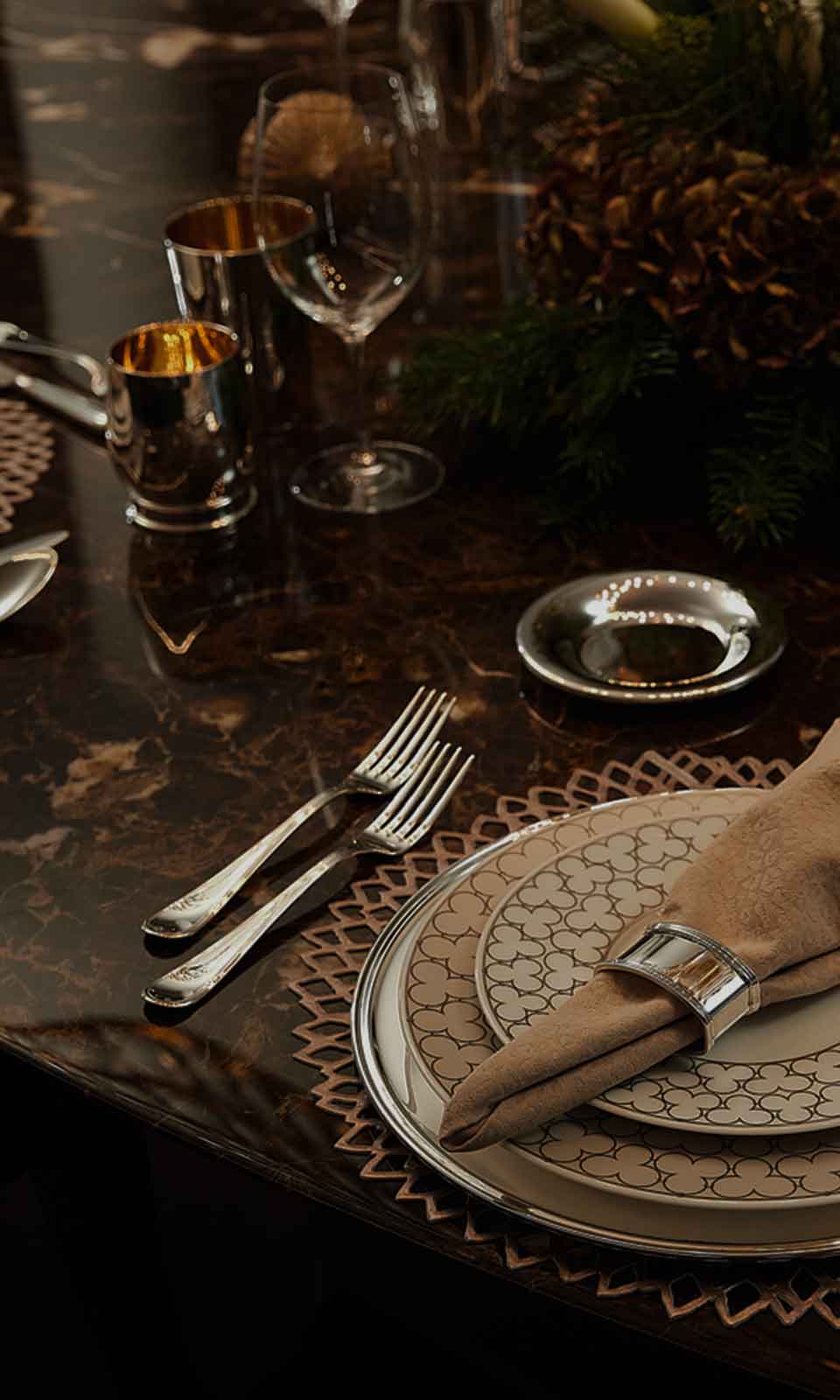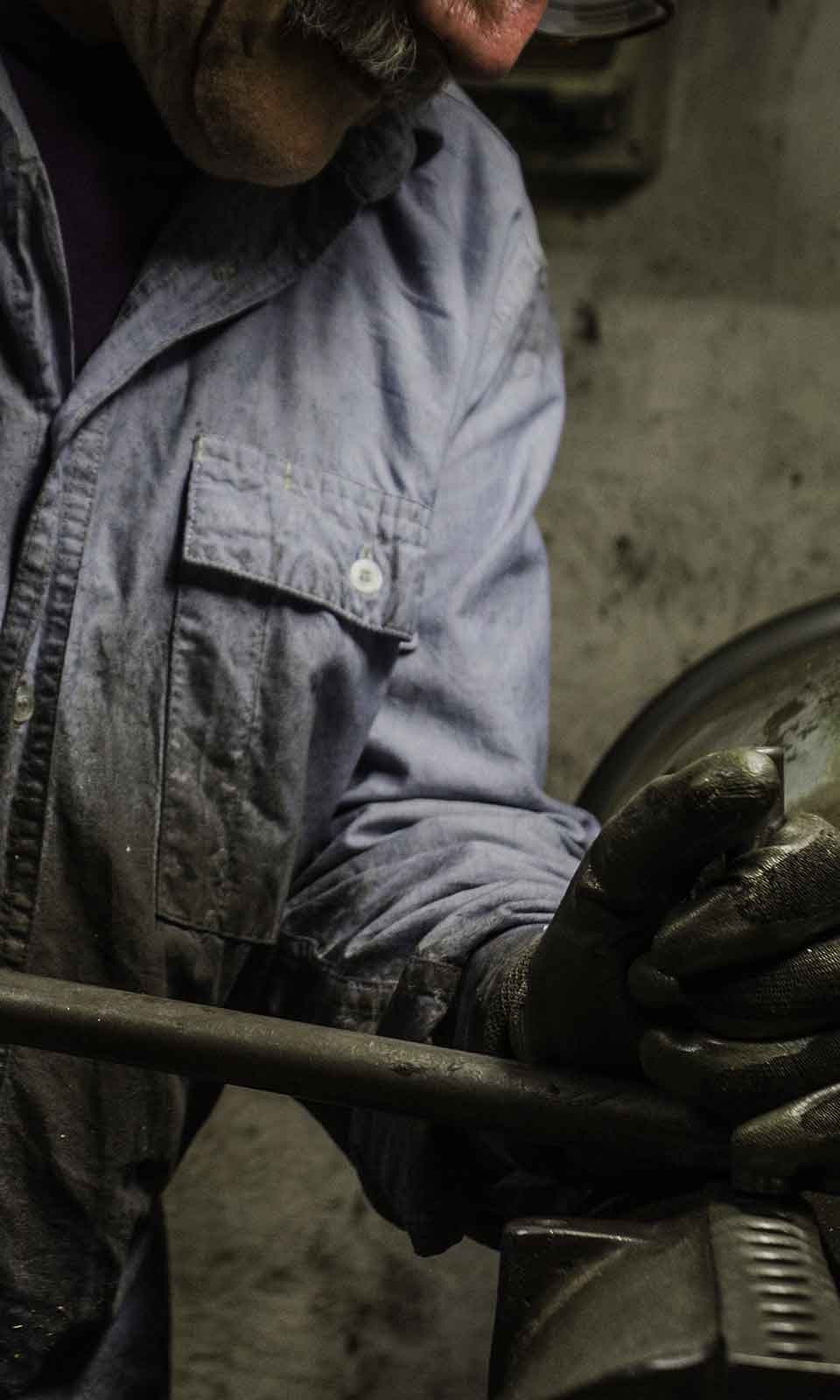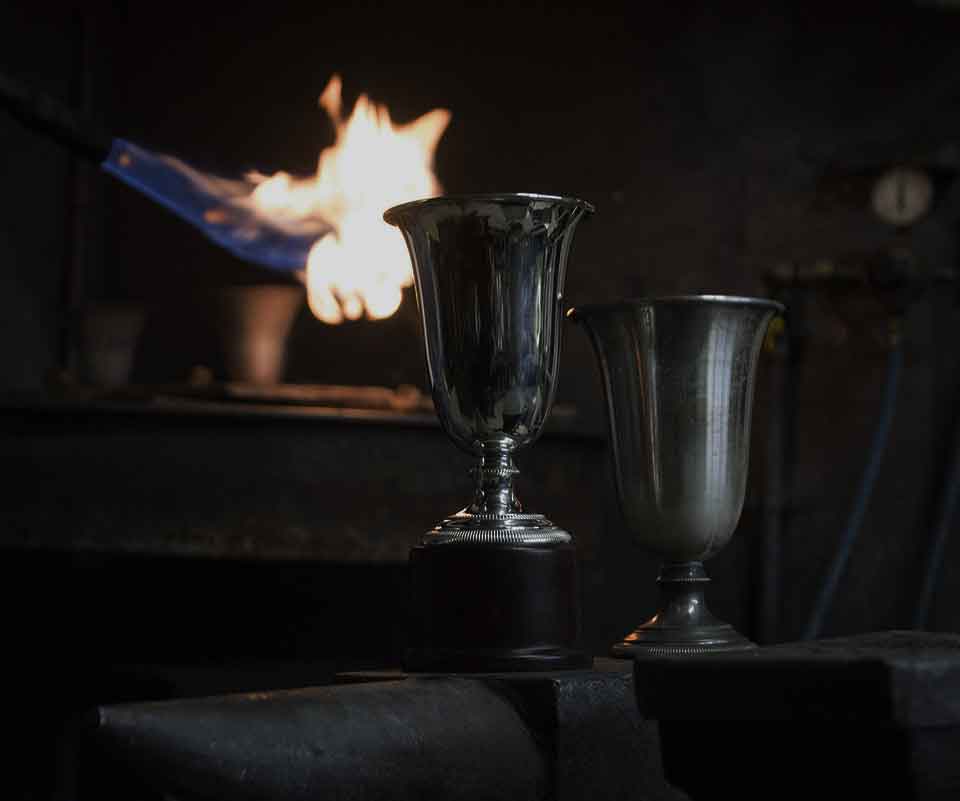Tradition
Miracoli is the oldest silver shop in Milan. Its ‘number 6’ stamp dates the tradition to 1912, which is why Argenteria Miracoli bears the title, Historical Laboratory and Shop of the City and Province of Milan, officially recognized by the Milan city and regional administrations. Interest in Miracoli production has always been exceptional due to its excellent quality, an excellence borne out by its participation in the prestigious School of Fine Arts Applied to Industry.
Thus, the story began a century ago, rooted in Italian goldsmith and silversmith craftsmanship, a tradition whose splendours are known throughout the world.
The tradition of Argenteria Miracoli has always been passed down from generation to generation from the original founder, Romeo, until today, along a line of succession that has kept the original methods and procedures unaltered from the beginning to guarantee a cultural and quality continuity that has made Argenteria Miracoli famous all over the world.

La famiglia delle 5 R
Romeo e Rinaldo
It was 1912 when Romeo opened a laboratory with a shop in Via Santa Sofia together with his father Rinaldo, who helped him in the early days. The store soon became the ‘living room’ of the Milanese ladies, who loved to gather and socialize there. Romeo was a great craftsman, able to work silver and other metals with great skill which he passed down through five generations. The Santa Sofia building was later destroyed during a bombing in the war, inevitably interrupting Miracoli’s business, like many others at the time in Milan.
Roberto
On the first of January, 1946, just a few months after the war was over, Miracoli was ready to start again with renewed enthusiasm. At this stage the business was in the able hands of Roberto, just 20 years old and with a 90- year career ahead of him. It is was not easy to sell jewelry after the war, but the desire for a new beginning prevailed over the labors of reconstruction, and silver soon returned to bring light and beauty into Milanese homes. In 1956 Miracoli moved to via Burigozzo, in a larger and more congenial location, where to this day the family's creations are still crafted.
Renato
Since 1971 Renato has been part of the Miracoli business, carrying forward the history of "silver tailoring", as he likes to define it. He has since added dazzling collections to the showroom, among which the unique ‘Wildlife’ animal sculpture collection, and continued to make use of traditional tools for innovative creations in the laboratory.
Riccardo
The very young Riccardo today carries on the memory and mastery of an art he learned as a little boy. In a time where his skills are exceptionally unique, Riccardo is enthusiastic about running the lathe works , and continues to create models and molds of all shapes and sizes combining the strength of tradition with the creativity of a young mind.
And finally Hanne
Today, Hanne Larsen is also part of the Miracoli family. She comes from Denmark and has been charmed by this activity, to which she decided to dedicate her life and creative flair. Her job is to bring the history and century old production of the company beyond the borders of Italy, but Hanne is also a skilled product designer and artwork developer, and has conceived many pieces like the beautiful silver duck that marked her entry into Miracoli’s family.


The Silver Worker's job
Every Miracoli piece is created using refined ancient techniques, wrapped in fire and purified to shine and withstand the test of time.
Fire is at the origin of all silver workings, as it gives malleability to the metal so that it may be crushed, stretched, compressed or expanded by the skilled hands of the turner, chiseller or smelter.
The trade tools are handed down from generation to generation, skilfully handled by the Silversmith Masters, true artists of measure and precision. The silver is expertly hand-molded, expanding and absorbing the energy of the fire. At the end of the artistic "struggle" with the material, any remaining imperfections are erased with a pumice stone, polished, and cleaned to ensure exceptional quality and sharpness.
Miracoli specialises in silver sculptures, with a variety of unique collections including ‘WildLife’, a selection of decorative pieces dedicated to animals.
The technique of used to forge these sculptures is called wax fusion. First, the artist shapes the wax. This allows for the engraving of tiny details with extraordinary precision, in which the quality of the artist is recognised?. At this point, a rubber mold is created to capture the molten silver and replace the wax itself, which melts with heat. At the end of the infusion process, the coating is removed and the silver casting is revealed, ready to be assembled and chiseled.
Another process used to craft our silver is turning. The craftsman fixes a wooden or steel model of the object he wants to make on a lathe, and wraps it with a silver laminate that adheres perfectly to it until the desired model is achieved.
Our cutlery is produced with the molding technique, through which the shape of the silver is given by steel molds and subsequently finished by hand.
One of the most refined techniques used, is the time-honoured chiseling of silver. The object is firstly engraved with the desired print after which the skilled hand of the chiseller defines its details and creates wonderfully precise inscriptions.
Silver can also be worked with engraving, with a metal tip called "burin", creating a highly valuable effect. The final touch is a pure silver galvanic bath that will overlap yielding a long-lasting shine.
